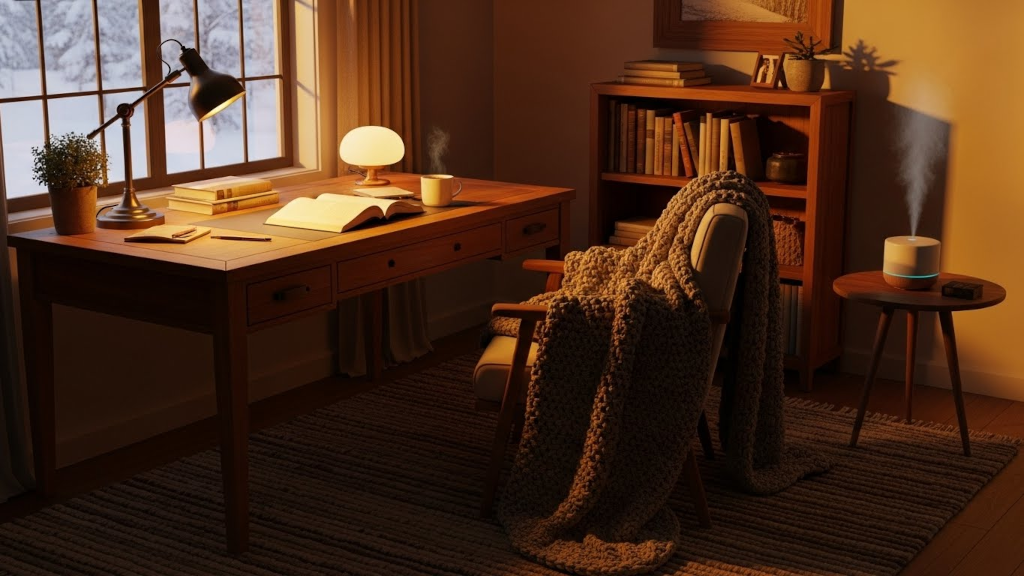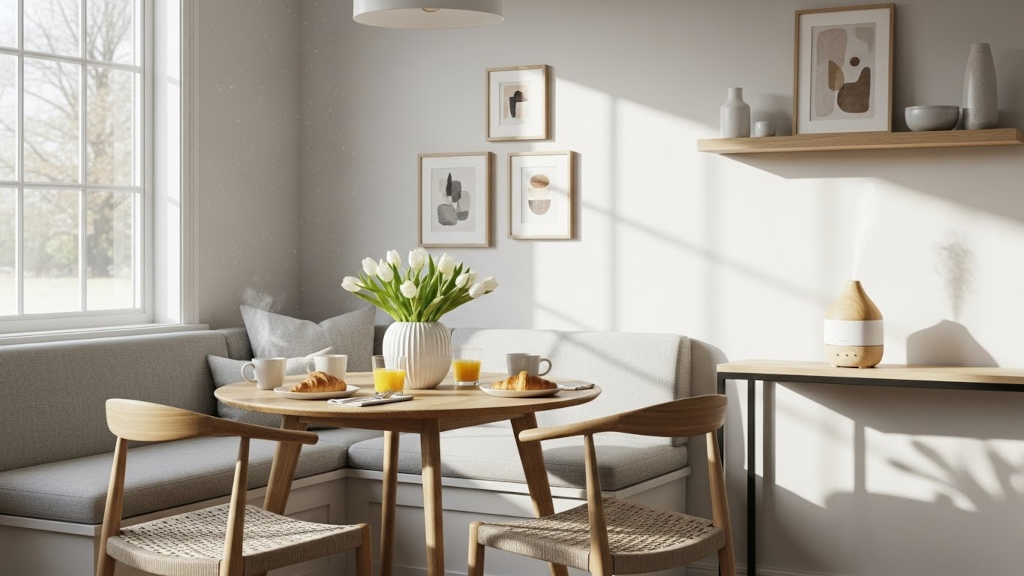Every home carries a rhythm. The light that moves through it shifts in color and tone as the hours pass. Morning arrives with clarity. The afternoon brings warmth and movement. Evening settles slowly, turning spaces quieter and more reflective. When thoughtfully chosen, scent can mirror that progression, enhancing how we move through time and space.
Fragrance does not need to remain static. Just as you may change your music or lighting throughout the day, shifting your scent can shape mood, focus, and energy. With the help of cold air diffusion, these transitions become seamless. The result is a sensory rhythm that matches your lifestyle, one scent at a time.
Morning Light and Uplifting Notes
Morning is a time for clarity. The senses are waking, the light is soft, and the air feels open. During these hours, fragrance should support alertness without overwhelm. This is where citrus, green, and light herbal notes perform beautifully.
Think of oils that offer a sense of movement. Lemon, bergamot, or grapefruit provides a clean lift. Mint or rosemary brings clarity without sharpness. These scents mimic the early light of day. They offer an invisible push forward.
To begin the day, try running your diffuser at a low, steady output. Let it fill the space gradually. A few drops of a bright, herbal blend can clear the air and signal the start of your rhythm. Keep the intensity light. The goal is not stimulation, but gentle activation.
Midday Energy and Centering Blends
By midday, the house is alive. Movement increases. So does the need for grounded focus. This is the time to shift your fragrance toward balance. You want the scent to hold space, not compete with it.
Blends featuring lavender, basil, or soft florals provide a sense of calm that still allows productivity. A touch of cedar or vetiver can offer structure without heaviness. These notes center a space and help anchor the mind during peak hours.
This part of the day benefits from longer diffusion cycles. Let the fragrance hold steady in the background. If the morning blend remains too bright, layer in a base note to round it out. The result should feel cohesive, not overly complex. Midday is about focus, not distraction.
Late Afternoon Transitions
As the light begins to soften, the energy in the home changes. Tasks wind down. The pace becomes slower. This is the moment when scent can prepare the body and mind for what comes next.
Late afternoon is ideal for transitional notes. Neroli, chamomile, or soft spice blends create warmth and ease. These oils do not signal sleep, but they do suggest a pause. They help move from effort to exhale.
You may not need to change your entire scent profile here. Sometimes adjusting the diffuser’s intensity is enough. Lowering the volume of fragrance allows the space to breathe. The light fades, and so does the weight of the day.
Evening Calm and Restorative Scents
Evening is where scent becomes most personal. The atmosphere slows. Lighting softens. Conversations quiet. This is the time to invite deeper notes into the space, ones that create comfort and ease.

Amber, sandalwood, or olibanum can all contribute to a grounded scentscape. These oils settle in the air without clinging. They shape the environment for rest, not stimulation. If you enjoy floral notes, choose the darker side of the spectrum, rose absolute, blue chamomile, or jasmine in small doses.
This is the moment to let fragrance take the lead. Let it define the space, wrap the room, and dissolve the edges of the day. Evening scenting is less about performance and more about presence.
Nighttime and the Subtle Fade
As the house grows quiet, fragrance should follow. The final scent of the day should be light, supportive, and unobtrusive. It is not meant to be noticed but felt.
Choose oils that promote deep rest and softness. Lavender, clary sage, or blended florals with warm edges work well here. Run your diffuser at its lowest setting or on a timer. The scent should not remain constant. Let it fade naturally as sleep takes over.
Nighttime fragrance invites release. It closes the rhythm of the day and prepares the space to begin again, softly and without effort.
Creating a Fragrance Schedule That Works for You
You do not need to use multiple diffusers or create elaborate scent plans. One space, one diffuser, and a few curated blends can support the full rhythm of your day. Focus on creating three to four moments that matter morning, midday, evening, and night.
Each transition does not require a full change. Sometimes a single drop of an oil with more weight can shift the mood of an entire room. Sometimes adjusting the timing or output is enough.
The key is intention. Let scent follow your light, your schedule, and your state of mind. When used thoughtfully, the fragrance becomes more than a pleasant detail. It becomes part of how your space lives.
Why This Matters
Scent influences how we move through space. It shapes focus, quiets tension, and enhances routine. When aligned with natural light and personal rhythm, fragrance adds depth to the design of your day.
Rather than choosing one scent for all hours, consider how your needs shift with time. Begin with clarity. Transition to focus. Slow with warmth. Settle into rest. These are not just scent cues. They are the framework for a more thoughtful way of living.
With clean diffusion, you have the tools to make these shifts effortlessly. Let your fragrance match your light, and you will find your day takes on a new kind of harmony.








